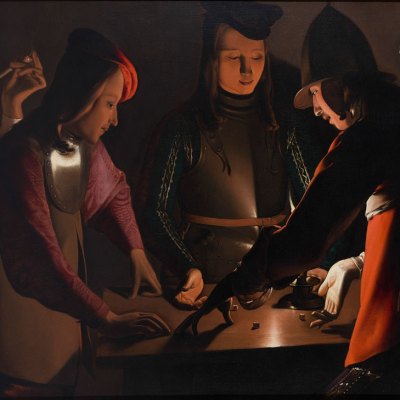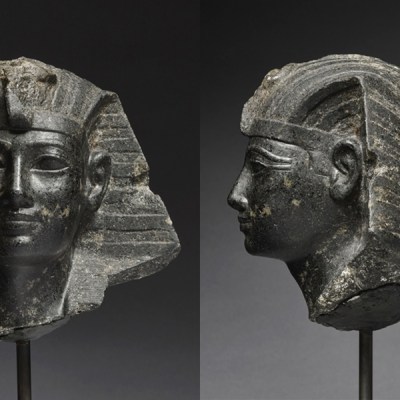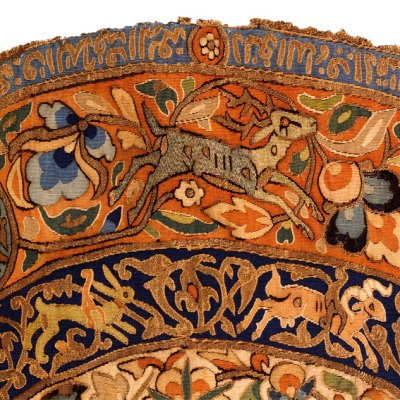You only need to drop the magic name of Caravaggio for people to queue around the block. But it is not just the work of the tempestuous, radical genius that commands interest; his followers too are on the rise, celebrated in three major exhibitions this year (‘Beyond Caravaggio’ at the National Gallery, London; ‘Valentin de Boulogne: Beyond Caravaggio’ at the Metropolitan Museum of Art, New York; ‘Caravaggio and the Painters of the North’ at the Museo Thyssen-Bornemisza, Madrid).
He trained as a painter in Milan, and moved to Rome in his early 20s, seeming to spring from nowhere to revolutionise painting with his dramatic realism; undoubtedly his impact on the artists of many nationalities based in Rome in the early 1600s was explosive, spreading his influence right across Europe. He may not have run a formal studio with pupils to preserve his legacy, but he pioneered new ways of seeing and depicting the world – including painting directly from the posed model under a raking light – and his groundbreaking vision inspired many other artists. And while the fertile vein of close-up scenarios of cardsharpers and musicians, alongside forceful religious paintings, their intensity enhanced by extreme contrasts of light and dark, had run its course in Italy within 50 years, today these paintings are again finding an audience.
The Sacrifice of Isaac (c. 1617), Bartolomeo Cavarozzi Courtesy of Sotheby’s London, £3.7m

‘There is a growing number of collectors with an interest in dramatic pictures,’ says Henry Pettifer, Christie’s head of Old Master and British paintings. Based largely in Europe and America, these collectors look for ‘powerful imagery, a strong narrative, dark and light’, Pettifer says. Great examples of paintings by the followers of Caravaggio rarely come to market, but when they do emerge, they can fetch high prices. In 2014 at Sotheby’s London, the monumental yet tender Sacrifice of Isaac, painted in Spain around 1617 by Bartolomeo Cavarozzi, one of Caravaggio’s most gifted followers, sold for £3.7m. In January this year, Orazio Gentileschi’s seductive Danaë (1621) sold for $30.5m at Sotheby’s New York. Both set new artist records. More surprising was the $5.2m paid the previous day for The Crowning with Thorns from the Taubman collection, among the first known works by Valentin de Boulogne. Unlike Gentileschi and Cavarozzi, the French painter arrived in Rome too late to meet Caravaggio in person, most likely absorbing his style through Bartolomeo Manfredi, Caravaggio’s most influential follower.
Among Dutch followers, it is the works of Hendrick ter Brugghen and Gerrit van Honthorst that have performed best at auction. Ter Brugghen’s beautiful The Bagpipe Player in Profile (1624), seized by the Nazis in 1938 and returned to the heirs in 2008, sold at Sotheby’s New York in 2009 for a record $10.2m. It was bought by London dealer in Dutch paintings, Johnny van Haeften, who sold it to the National Gallery of Art, Washington. Another looted painting, Honthorst’s racy and atmospheric The Duet (1624), sold at Christie’s New York in 2013 for $3.4m – an artist record. The following January that record was broken again, when the recently rediscovered A Merry Group Behind a Balustrade With a Violin and a Lute Player (1623–24) attracted fierce bidding at Sotheby’s New York, reaching $7.6m.
The Bagpipe Player (1624), Ter Brugghen Courtesy of Sotheby’s, $10.2m

Alexander Bell, Sotheby’s co-chairman of Old Master paintings worldwide, warns against generalisations. ‘Caravaggio did not have just one style, and the best of his followers also diverged separately from his example,’ he says. ‘Paintings by the premier league of Caravaggio followers come up so rarely that when they do come to market, the price achieved depends very much upon the particular picture.’ Having said that, Caravaggesque paintings ‘do appeal to a modern sensibility’. ‘They are eye-catching and immediate,’ Bell adds.
Clovis Whitfield, a London dealer with long experience in this field, says that secular subjects are more popular among contemporary collectors than religious paintings. He currently has available a bold St Sebastian by the French painter, Louis Finson, impressively foreshortened against a brooding sky (£525,000). Finson owned a number of paintings by Caravaggio, and is first documented in Naples in 1604, where Caravaggio fled in 1606 after killing a man in a brawl in Rome. ‘He must have seen [what is known as Caravaggio’s] “St John the Baptist with a lamb”, now in the Galleria Nazionale di Palazzo Corsini,’ says Whitfield. Finson’s auction record leapt spectacularly in 2005 when his Allegory of the Four Elements (1611) sold at Sotheby’s Amsterdam for €482,400, nearly ten times the high estimate. As one of the contenders for authorship of the Judith Beheading Holofernes recently rediscovered in an attic in Toulouse (some have ambitiously attributed the painting to Caravaggio himself), Finson’s market may rise even more.
New York dealer Otto Naumann suggests by contrast that the market for Italian paintings has been badly hit by a falling Euro, the economic malaise in Italy, and the ferocity of Italy’s tax inspectors. But while Italians largely buy Italian paintings and the French largely buy French paintings, English and American collectors fortunately ‘buy from everywhere’. He sold two early paintings, dated c. 1625–30, by the Neapolitan Andrea Vaccaro, at the inaugural TEFAF New York Fall, one of them St Stephen taken to his Martyrdom. Naumann still has available the beautiful St John the Baptist in the Wilderness by Giovanni Baglione, a friend of Caravaggio until they fell out, now dated to 1610 – the year of Caravaggio’s mysterious and possibly violent death. ‘The difference between a pre- and post-1610 Caravaggesque painting is important for collectors,’ Naumann says.
St Stephen taken to his Martyrdom (c. 1625-30), Andrea Vaccaro. Courtesy Otto Naumann

Edmondo di Robilant of Robilant + Voena concurs. ‘You are always talking about the higher level of quality and a 1610, 1611 date.’ In the 1990s and 2000s he had one or two serious collectors for such pictures. ‘What is encouraging is that we are selling a few at the moment,’ he says. He sold a St John the Baptist of around 1610 by Bartolomeo Manfredi at TEFAF New York Fall to a private client from outside the usual European/American sphere. His London space is currently staging ‘In Pursuit of Caravaggio’ (until 27 January 2017), a choice exhibition of 12 paintings including works by Manfredi, Baglione, and Matthias Stomer.
Finally, works by Jusepe de Ribera, whose vivid chiaroscuro paintings had a decisive impact in his native Spain, are highly sought after. London dealer Fergus Hall says: ‘The market for Ribera, which was relatively weak in the 1980s, has gone from strength to strength over the last decade.’ At TEFAF Maastricht in March, Hall unveiled a huge painting of Hercules dated 1625–30 from the Barbara Piasecka Johnson collection; he bought it for £350,000 at Sotheby’s London in 2014, where it was catalogued as by ‘Ribera and workshop’. Cleaning has revealed a master work, now attributed to Ribera alone, for which Hall is asking £3.6m.
From the December issue of Apollo. Preview and subscribe here.



